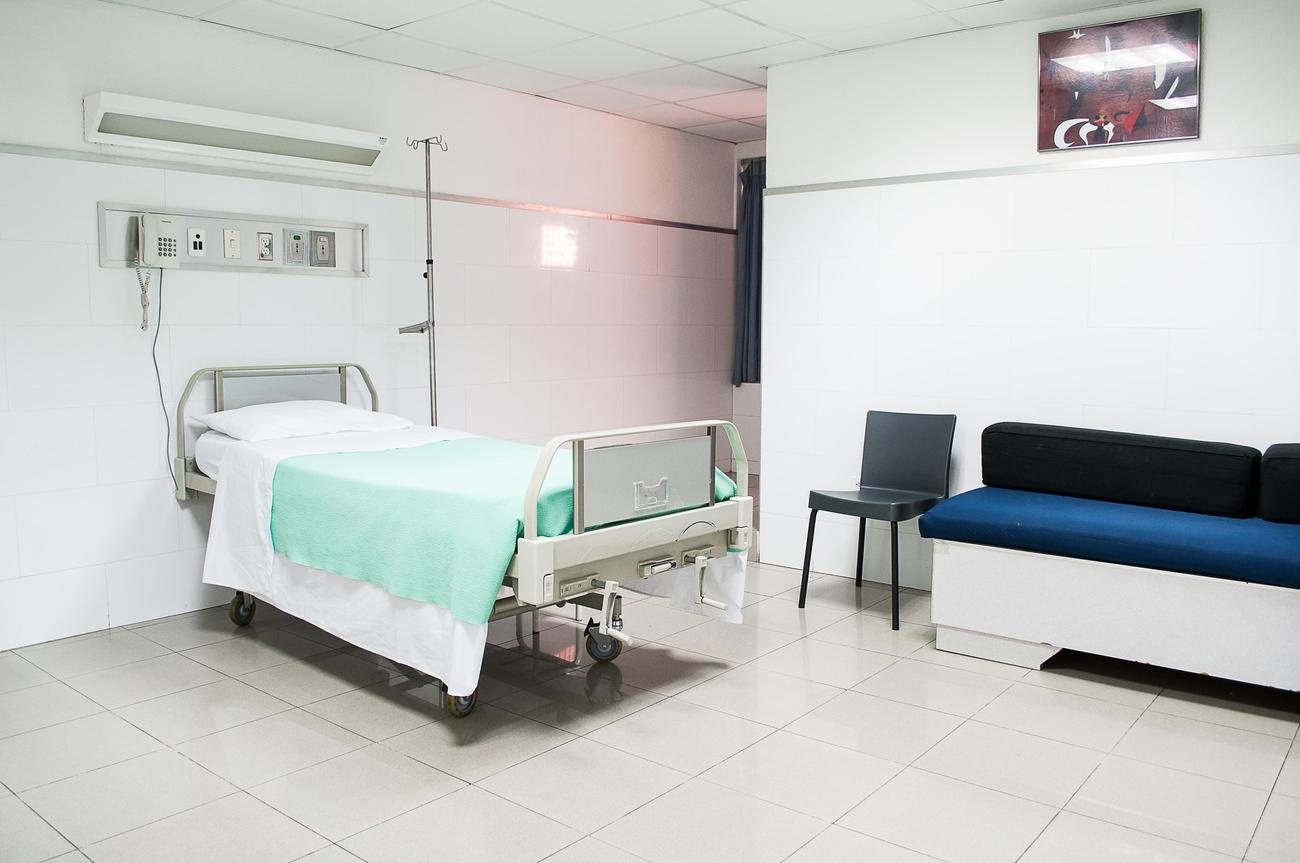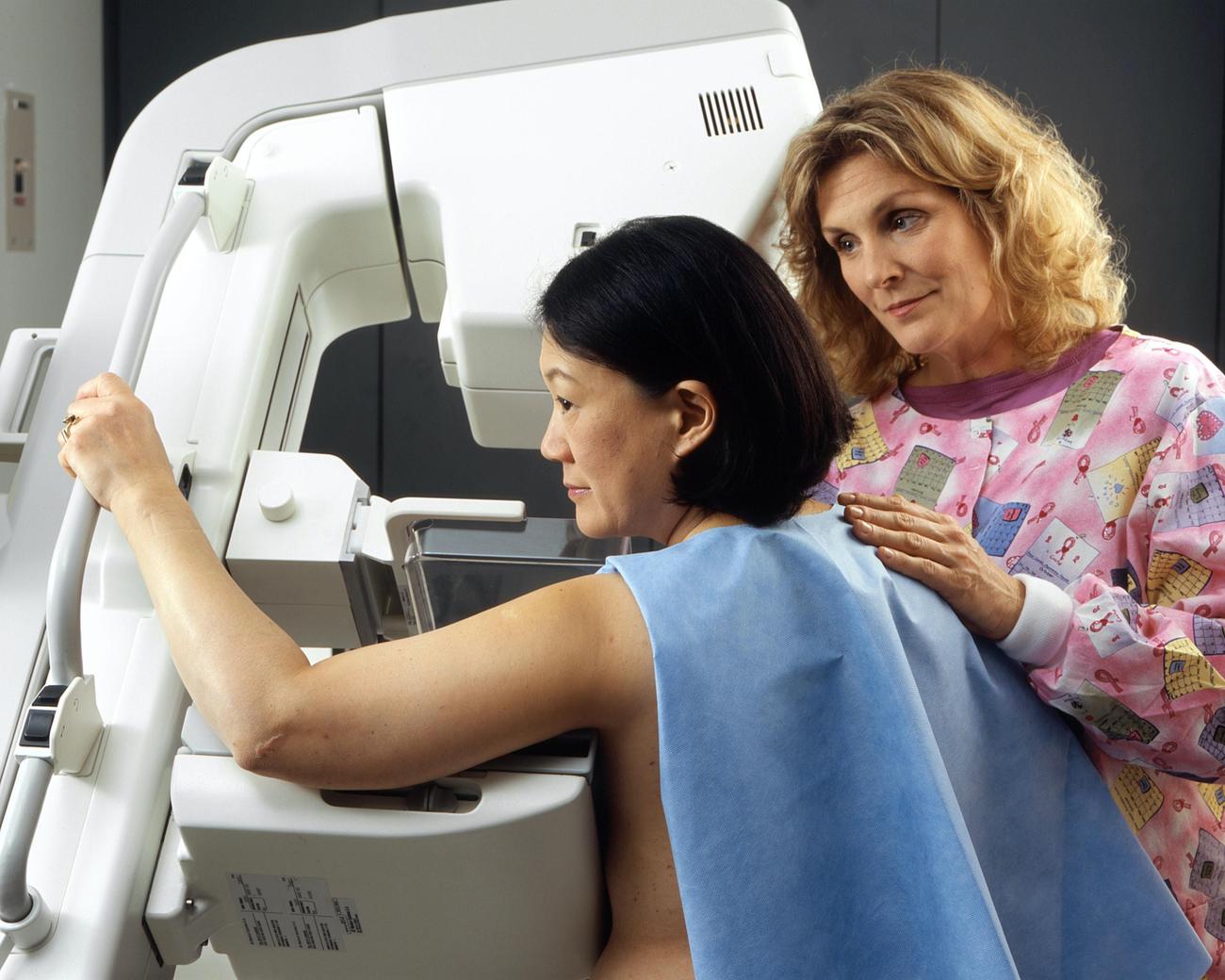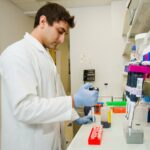As an experienced healthcare professional with a strong background in phlebotomy, I am thrilled to present to you “The Essential Facts of Phlebotomy: Unveiling the Role of Blood Collection in Healthcare.” In this enlightening article, we will delve into the responsibilities and vital role of phlebotomists in modern healthcare. Phlebotomy, often referred to as the art of drawing blood, plays a crucial role in diagnosing and monitoring various medical conditions. With their expertise in venipuncture and specimen collection, phlebotomists ensure accurate and safe blood sample collection for laboratory analysis. Join me on this journey as we explore the intricate world of phlebotomy and uncover the indispensable contributions of these skilled professionals in the healthcare industry.

Facts about Phlebotomy
Phlebotomy is a vital medical practice that involves drawing blood from patients for various diagnostic and therapeutic purposes. As an experienced healthcare professional specializing in phlebotomy, I am excited to share with you some essential facts about this crucial procedure that plays a significant role in modern healthcare.
The Ancestry of Phlebotomy: From Bloodletting to Barber Surgeons
To truly understand the historical significance of phlebotomy, we must delve into its ancestry. Bloodletting, an ancient practice aimed at removing “evil spirits” or illnesses from the body, serves as the earliest predecessor of phlebotomy. In medieval times, barbers took on the responsibility of providing bloodletting services alongside their more conventional barbering duties. Yes, you heard that right—it was the barbers who also practiced this medical procedure!
“The roots of phlebotomy can be traced back to bloodletting, a practice employed centuries ago to rid the body of ailments believed to be caused by ‘evil spirits’ or illness.”
Phlebotomy Makes Its Way to the New World
As with many practices, phlebotomy traveled across continents and found its way to the United States. In the 18th century, the pilgrims brought the art of bloodletting to the American shores. Little did they know that this procedure would set the stage for future advancements in the field of phlebotomy.
George Washington and the Fatal Consequences of Bloodletting
One of the most unfortunate stories in phlebotomy’s history is the tale of George Washington. In 1799, the first President of the United States fell ill with a throat infection. In an attempt to cure him, approximately nine pints of blood were drawn from his body through bloodletting. Tragically, this excessive blood loss ultimately led to his demise. This cautionary tale serves as a stark reminder of the importance of utilizing evidence-based practices and staying informed about the advancements in phlebotomy.
“The story of George Washington’s ill-fated bloodletting highlights the potential dangers of excessive blood loss, underscoring the significance of adhering to best practices in phlebotomy.”
Phlebotomy Isn’t Just for Humans
While human phlebotomy might be more well-known, it is essential to acknowledge that veterinarians also perform phlebotomy to collect blood samples from animals. Just like in human medicine, the collection of blood samples in veterinary practices is crucial for diagnosing illnesses and determining appropriate treatments for our furry friends.
Phlebotomy Training: Accessible and Promising Career Outlook
If you’re considering a career in healthcare, phlebotomy offers numerous opportunities. One of the significant advantages of pursuing phlebotomy training is its accessibility. Compared to other healthcare professions, phlebotomy training tends to be more affordable and requires less time to complete. Furthermore, the demand for skilled phlebotomy technicians remains strong, ensuring favorable job prospects in this field.
“Phlebotomy training presents an accessible pathway to a career in healthcare, with a promising job outlook for technicians.”
In conclusion, phlebotomy, with its rich historical background and critical role in healthcare, deserves recognition as a fundamental medical practice. With its roots in bloodletting, this procedure has come a long way in terms of safety, efficiency, and impact. As we continue to explore the ever-evolving field of phlebotomy, it is vital to embrace evidence-based practices and further our understanding of the complexities involved in this essential blood collection process.
“By unveiling the historical ancestry, highlighting key moments, and showcasing its potential as a career path, we gain valuable insights into the multifaceted world of phlebotomy.”
Facts About Phlebotomy:
Phlebotomy is becoming an increasingly popular career choice for those who are interested in the medical field. If you’ve ever wondered just how long it takes to complete phlebotomy school, you’ll be pleased to know that it can be done in a relatively short amount of time. So, how long is phlebotomy school exactly? Find out here: how long is phlebotomy school.
Now, let’s talk about something that every phlebotomist needs to know – the color-coded tubes used for different tests. It can be quite confusing, but worry not, we have you covered. Discover the correlation between tube colors and specific tests here: what color tubes are used for which tests in phlebotomy.
Once you’ve completed your phlebotomy training, you might be wondering how long your certification will last. The duration of phlebotomy certification varies, so if you want to learn more about it, click here: how long does phlebotomy certification last.
Have you ever heard of therapeutic phlebotomy? It’s an interesting procedure with various medical applications. If you’re curious to learn more about what therapeutic phlebotomy entails, click here: what is therapeutic phlebotomy.
Lastly, if you’ve ever stumbled over the pronunciation of the word “phlebotomy,” fear not! We’re here to help. Click here to learn the correct pronunciation and impress your friends: how to pronounce phlebotomy.
Explore these fascinating aspects of phlebotomy and enhance your knowledge in this field. Happy reading!
Phlebotomists’ Responsibilities
As a phlebotomist, I hold a crucial role in the healthcare system, ensuring the accurate and safe collection of blood samples for diagnostic and therapeutic purposes. Let’s delve into the specific responsibilities that phlebotomists undertake in their day-to-day work.
1. Identification and Patient Communication
One of the initial responsibilities of a phlebotomist is to properly identify patients before collecting their blood samples. This involves verifying patient information, such as their name, date of birth, and medical records, to prevent any errors or mix-ups. It’s important to establish clear communication with patients, explaining the procedures in a way they can understand and addressing any concerns they may have. By establishing rapport with patients, phlebotomists create a comfortable and trusting environment for blood collection.
“Phlebotomists take the time to ensure they have the right patient, putting patients at ease through effective communication.”
2. Equipment Preparation and Blood Sample Labeling
Phlebotomists are responsible for preparing and organizing the necessary equipment for blood collection. This includes ensuring that needles, tubes, and other supplies are clean, sterile, and accessible. Additionally, phlebotomists must carefully label each blood sample with the patient’s information, taking great care to avoid any errors. Proper labeling is essential for accurate diagnosis and tracking of specimens throughout the laboratory process.
“By meticulously preparing equipment and labeling blood samples, phlebotomists maintain the integrity of the specimens, contributing to reliable test results.”
3. Safety and Infection Control
Safety is a top priority for phlebotomists. They strictly adhere to infection control protocols, minimizing the risk of transmitting infectious diseases both to themselves and the patients. Phlebotomists are trained in proper hand hygiene, the use of personal protective equipment (PPE), and disposal of potentially hazardous materials. By following these established safety measures, phlebotomists create a secure environment for patients and themselves.
“With their commitment to safety and infection control, phlebotomists play a vital role in preventing the spread of diseases during blood collection procedures.”
4. Versatile Work Settings
Phlebotomists are valuable assets in various healthcare settings such as hospitals, clinical laboratories, and community health centers. They adapt their skills and techniques to accommodate the specific needs and protocols of each setting. Whether supporting doctors in hospitals or performing blood collections for community health screenings, phlebotomists bring their expertise to diverse environments.
“From hospitals to community health centers, phlebotomists contribute their skills and knowledge to a range of medical settings, supporting efficient blood collection processes.”
5. Venipuncture and Specimen Collection
One of the main responsibilities of a phlebotomist is performing venipuncture—the process of puncturing a vein to collect blood. They must possess the technical skills and precision necessary to locate suitable veins and perform the procedure with minimal discomfort to the patient. Phlebotomists also ensure the proper collection, handling, and preservation of blood specimens for laboratory testing, blood donations, or transfusions. Attention to detail is crucial in this aspect of the job to maintain the accuracy and integrity of collected samples.
“Through their expertise in venipuncture and specimen collection, phlebotomists contribute to accurate diagnosis, blood transfusions, and other crucial medical procedures.”
6. Skillful Data Entry
Phlebotomists are responsible for accurately documenting patient information and test orders. They meticulously enter this data into electronic medical record systems or laboratory information systems. Attention to detail and efficiency are key in this responsibility to ensure that the correct tests are conducted and that the results are associated with the right patients.
“With their careful data entry, phlebotomists play a vital role in maintaining accurate records, supporting seamless coordination between healthcare providers.”
7. Continuous Education and Certification
While a specific certification is not mandatory to work as a phlebotomist, many professionals choose to pursue certification to validate their knowledge and skills. Certification programs test phlebotomists on their understanding of best practices, safety guidelines, and ethical considerations. Additionally, phlebotomists engage in ongoing education and development to stay updated on the latest advancements in the field.
“Phlebotomists demonstrate their commitment to excellence by pursuing ongoing education and, if desired, obtaining industry certifications.”
Phlebotomists bear the responsibility of ensuring accurate and safe blood collection, with their expertise playing a vital role in supporting healthcare providers in diagnosing and treating patients. By focusing on patient identification, equipment preparation, safety measures, and proper specimen collection, phlebotomists uphold the highest standards in their indispensable role.
(Table)
Here’s a brief comparison of being a phlebotomist:
| Pros | Cons |
|---|---|
| Promising career | Exposure to bodily fluids |
| Short training time | Irregular schedules |
| Versatile work | Potential needlestick |
| environments | injuries |
| Important role in healthcare | Physically demanding job |
“Phlebotomists play a pivotal role in healthcare, offering promising careers with short training time while being exposed to potential risks and demanding physical efforts.”
As a dedicated phlebotomist, I know firsthand the significance of these responsibilities and the immense contribution of blood collection to the healthcare landscape. Through meticulous attention to detail, adherence to safety protocols, and a commitment to patient care, we ensure the integrity of the blood samples and support accurate diagnosis and treatment.
Remember, the next time you encounter a phlebotomist, appreciate the vital role they play in the world of healthcare.
What does a phlebotomist do?
Phlebotomists are the unsung heroes in the healthcare field, responsible for the vital task of drawing blood from individuals. You may have encountered them in hospitals, doctors’ offices, or labs, but do you really know what they do? Let’s uncover the essential facts about the role of phlebotomists in blood collection and their contribution to healthcare.
Phlebotomy is a procedure that involves drawing blood samples using a small needle to puncture a vein, typically in the arm. But it’s not just about sticking a needle in and collecting blood. Phlebotomists are highly trained professionals who possess a wide range of skills and expertise to ensure a safe and accurate blood collection process.
First and foremost, phlebotomists prioritize patient safety. They take the time to properly identify patients before collecting their blood samples and establish a rapport through effective communication. Patient comfort and well-being are paramount, and phlebotomists understand the importance of providing a calm and reassuring environment.
“Safety is the priority, and phlebotomists strictly adhere to infection control protocols and established safety measures.”
Once the patient is ready, phlebotomists prepare and organize the necessary equipment for blood collection. They carefully label each blood sample to maintain integrity and ensure accurate diagnosis. Their attention to detail is crucial, as even the slightest mistake could have serious consequences for patient care.
“Safety measures and meticulous organization are the foundations of a successful blood collection.”
Phlebotomists work in a variety of healthcare settings, adapting their skills to accommodate the specific needs and protocols of each setting. Whether it’s a bustling hospital or a quiet doctor’s office, they strive to provide the best possible care for patients.
“The versatility of phlebotomists allows them to excel in any healthcare environment, ensuring efficient blood collection wherever they go.”
Venipuncture is a skill that phlebotomists excel at. It involves inserting a needle into a vein to draw a blood sample. This may sound simple, but it requires precision and expertise to perform it accurately and painlessly. Phlebotomists know the right techniques to minimize discomfort and maximize the success of the blood draw.
“Venipuncture is an art, and phlebotomists are the skilled artists who master this technique.”
Depending on the tests ordered by healthcare providers, phlebotomists may need to collect multiple vials of blood. But they always keep a watchful eye on the patient’s well-being, ensuring they don’t lose too much blood.
“Phlebotomists balance the need for blood samples with the safety and well-being of each patient.”
Their responsibilities don’t end with the collection of blood samples. Phlebotomists ensure the safe transfer of these samples to the lab for testing. Accuracy and proper handling are crucial, as the results of these tests provide valuable information about a person’s health and aid in diagnosis and treatment.
“Phlebotomists are the reliable bridge between patients and the laboratory, ensuring the accuracy and integrity of every blood sample.”
Not only do phlebotomists assist in clinical diagnostics, but they also play a vital role in collecting blood for donations. Their skill in drawing blood helps fuel the much-needed supply of blood that saves lives every day.
“By supporting blood donations, phlebotomists contribute to the collective effort of saving lives and improving human health.”
Becoming a phlebotomist requires specific training and education. While it offers a promising career path with numerous opportunities, it also exposes individuals to potential risks and demanding physical efforts. Phlebotomists must constantly stay updated on the latest advancements in the field through certification and ongoing education.
“Phlebotomy is a rewarding journey that requires dedication to continuous learning and professional growth.”
In conclusion, phlebotomists are the backbone of blood collection in healthcare. They go above and beyond to ensure patient safety, accurate blood collection, and seamless coordination between healthcare providers. Their expertise and dedication play a critical role in supporting accurate diagnosis, treatment, and blood donation efforts.
“With each blood draw, phlebotomists make a lasting impact on the lives of patients and contribute to the overall healthcare system.”
Table: Phlebotomy Equipment Checklist
| Essential Equipment |
|---|
| Needles of various sizes |
| Blood collection tubes |
| Specimen labels |
| Tourniquet |
| Alcohol swabs |
| Gauze |
| Bandages |
| Gloves |
| Personal protective equipment (PPE) |
| Lancets for finger pricks |
Remember, phlebotomists are the ones with the steady hands, warm hearts, and the expertise to make blood collection a smooth and safe process for everyone involved. Next time you encounter a phlebotomist, appreciate the essential role they play in modern healthcare.
8 Fascinating Facts About Phlebotomy
[youtube v=”M_hdJx-SA30″]
Phlebotomy: Unveiling the Ancient Roots and Modern Practice
Phlebotomy, the practice of drawing blood from patients for diagnostic and therapeutic purposes, is a field that goes far beyond its commonly known role. Let’s delve into the intriguing world of phlebotomy and discover some surprising facts that you may not have known.
1. A Journey Through History: From Bloodletting to Barbers
Phlebotomy has its roots in bloodletting, an ancient practice believed to rid the body of evil spirits or illnesses. Remarkably, in medieval times, barbers performed bloodletting alongside their traditional duties. The iconic barber pole, with its red, white, and blue stripes, symbolizes the act of drawing blood. Such practices were known as “breathing a vein” and involved extracting blood from larger veins in the neck or forearms.
“Bloodletting formed the foundation of phlebotomy, deeply rooted in historical and cultural beliefs.”
2. Phlebotomy Journeys Across Continents
As phlebotomy evolved, it journeyed across continents and found its place in veterinary medicine as well. Veterinarians and animal healthcare professionals also perform phlebotomy on animals. This enables them to run essential tests for diagnostic and treatment purposes, ensuring the well-being of our furry companions.
“Phlebotomy extends its healing touch to the animal kingdom, contributing to the health of our beloved pets.”
3. Bloodletting Reaches American Shores
Phlebotomy made its way to the United States during the 18th century. It was brought by the early settlers, including the pilgrims who arrived on American shores. However, it was not until the tragic case of George Washington that the dangers of excessive bloodletting truly came to light. Washington’s death resulted from a botched bloodletting procedure where nine pints of blood were drawn from him in an attempt to treat a throat infection.
“George Washington’s unfortunate fate underscores the importance of understanding the risks associated with bloodletting.”
4. Arteriotomy and the Art of Precision
In the realm of phlebotomy, arteriotomy involves puncturing an artery, usually in the temples. This technique requires precision and skill, as it is performed for specific medical procedures when necessary.
5. Leeches: The Tiny Blood Extractors
During the 1830s and 40s, leeches played a prominent role in bloodletting practices in France and England. These tiny organisms were used as a means to draw blood from patients. Although their use has significantly diminished over time, it highlights the diverse techniques that were employed in the ever-evolving field of phlebotomy.
6. The Modern Role of Phlebotomists
Phlebotomy has come a long way from its historical origins. Today, the practice is an integral part of the healthcare system, supporting accurate diagnosis, treatment, and blood donation efforts. Phlebotomists play a vital role in responsibly drawing blood from individuals, ensuring patient safety, and establishing rapport through effective communication.
7. Skills and Safety Measures
Phlebotomists possess a range of skills and knowledge essential for their work. They meticulously prepare and organize the necessary equipment for blood collection, ensuring each blood sample is carefully labeled to maintain integrity and enable accurate diagnosis. Safety is of utmost importance, and phlebotomists adhere to strict infection control protocols and established safety measures to create a secure environment for both themselves and their patients.
8. The Path to Becoming a Phlebotomist: Training and Continuous Education
Becoming a proficient phlebotomist requires specific training and education in the field. Many choose to pursue certification and engage in ongoing education to stay up-to-date with the latest advancements. Continuous learning ensures that phlebotomists remain knowledgeable about evidence-based practices and the complexities involved in the safe and efficient collection of blood.
“Phlebotomists are not only skilled professionals but also lifelong learners, committed to providing the best care through continuous education.”
Phlebotomy, with its rich history and vital role in modern healthcare, offers promising career opportunities. However, it demands dedication, attention to detail, and the ability to adapt to the evolving needs and protocols of different healthcare settings. Phlebotomists are unsung heroes, playing a crucial part in the journey toward accurate diagnosis, effective treatment, and the advancement of medical knowledge.
[Insert appropriate conclusion here, focusing on the significance and impact of phlebotomy in healthcare.]

FAQ
Question 1
What is the role of a phlebotomist in healthcare?
Answer 1
Phlebotomists play a crucial role in the health and treatment of individuals by collecting blood samples for testing. They are responsible for performing venipuncture, which involves inserting a needle into a vein to draw a blood sample. Phlebotomists may collect multiple vials of blood depending on the tests ordered by a healthcare provider.
Question 2
Where do phlebotomists work?
Answer 2
Phlebotomists can work in various settings such as hospitals, doctors’ offices, laboratories, and more. They are essential members of healthcare teams and can be found in both clinical and non-clinical environments.
Question 3
What is the procedure followed by phlebotomists to draw blood?
Answer 3
Phlebotomy is the procedure of drawing blood using a small needle to puncture a vein, typically in the arm. It is important for phlebotomists to follow proper procedures to avoid situations where patients lose too much blood. They must identify patients, explain the procedure, prepare equipment, and ensure blood samples are properly labeled and stored.
Question 4
Do phlebotomists only collect blood for testing?
Answer 4
While phlebotomists primarily collect blood for diagnostic testing, they also have the important task of collecting blood for donation. Their role extends beyond the collection of blood samples, contributing to the overall healthcare system by providing accurate samples for testing and analysis.
Question 5
What are the benefits of pursuing a career as a phlebotomist?
Answer 5
Becoming a phlebotomist offers numerous benefits, including job stability, the ability to work in various healthcare settings, and the opportunity to help others. With specific training and education, individuals can enter this rewarding career path and make a difference in the lives of patients.
- Star Ring Trends: Etsy vs Amazon - March 28, 2025
- Boost Pollinator Habitats: Baby Blue Eyes Sustainable Farming Guide - March 28, 2025
- Protect Big Black Bears: Effective Conservation Strategies - March 28, 2025
















